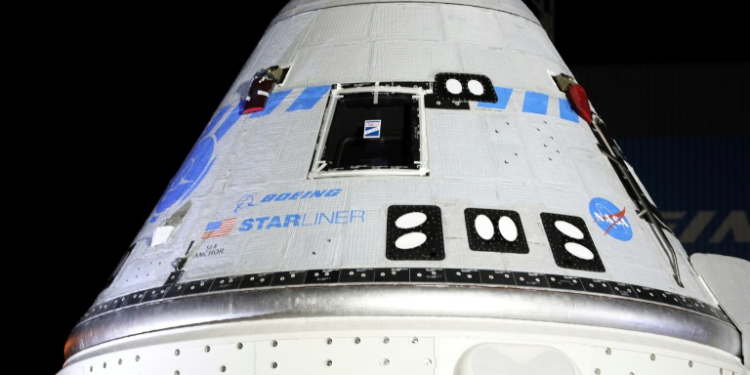Washington (AFP) – Throughout the annals of American space exploration, a select few spacecraft have had the distinction of carrying human beings beyond our home planet. Boeing now joins this elite group with the long-awaited launch of its Starliner capsule, just the sixth class of vessel built in the United States for NASA astronauts.
Here’s a recap of their storied past, marked by groundbreaking triumphs and some devastating setbacks.
– Mercury –
Known as America’s “man-in-space” program, Project Mercury was born just days after NASA itself was formed in 1958, and officials settled on the term “astronauts” for its space explorers. On May 5, 1961, Alan Shepard became the first American to fly in space during a 15-minute suborbital flight in the one-man, cone-shaped capsule — about a month after the Soviet Union’s Yuri Gagarin became the first human to achieve the feat. Another milestone came in February 1962 when Mercury astronaut John Glenn became the first American to orbit the Earth. Black mathematician Katherine Johnson, whose story was immortalized in the book and film “Hidden Figures,” was among those working tirelessly from the ground to ensure the program’s success.
– Gemini –
While Mercury was about getting people up into space, Gemini was focused on extending their mission time and developing critical maneuvers — such as spacewalking, and mastering precise orbital velocity matching for spacecraft docking. The Gemini spaceship resembled an enlarged Mercury capsule, designed for a two-person crew. A significant innovation was the introduction of onboard computers, primitive by today’s standards but capable of assisting with the complexities of a space rendezvous. During the final Gemini mission, Buzz Aldrin — nicknamed “Dr Rendezvous” — was forced to pull out a sextant and make critical calculations on paper using a slide rule, in order to accomplish docking with an uncrewed practice spacecraft after the computerized tracking system went down.
– Apollo –
Apollo was NASA’s response to President John F. Kennedy’s challenge to land a man on the Moon before the end of the 1960s. Achieving the goal required three key pieces of technology. The first was the giant Saturn V rocket. Designed under ex-Nazi Wernher von Braun, it remained the most powerful rocket for five decades. The second piece was the command module — whose interior was as roomy as a big car — and the third was the lunar descent vehicle. While Apollo 11 achieved humanity’s first crewed touchdown on July 20, 1969, the program was also marked by tragedy. A fire during a preflight test for Apollo 1 killed all three crew members, highlighting the risks and sacrifices made in pursuit of space exploration.
– Space Shuttle –
NASA’s Space Shuttle program, which spanned from 1981 to 2011, took a revolutionary approach by combining rocket launch, capsule re-entry, and glider-like runway landings. The era marked significant milestones, including the first space flights by American women and minorities, the launch of the Hubble Space Telescope on the shuttle Discovery, and the construction of the International Space Station in the late 1990s. However, it was also marred by two devastating tragedies: the 1986 Challenger disaster, which occurred just after launch, and the 2003 Columbia disaster, which happened during re-entry. Both incidents resulted in the loss of all crew members, totaling 14 lives.
– Crew Dragon and Starliner –
After the space shuttle was retired, the United States was left without a homegrown capacity to launch its astronauts and was forced to rely on Russian Soyuz rockets. NASA decided to shift from a model where it owned the hardware, to instead hiring services from the commercial industry in multibillion dollar contracts. Newcomer SpaceX beat heavily-favored aerospace titan Boeing in flying its first crew to the ISS in 2020, an underdog triumph that catapulted Elon Musk’s company to powerhouse status. Meanwhile, Boeing has struggled with technical issues, echoing wider organizational problems that have plagued its aviation division. Both companies have adopted the classic gumdrop-shaped capsule design, but with modern twists: sleek displays, autonomous flight, and full reusability. NASA’s Orion capsule should be the seventh spaceship to carry American astronauts during the Artemis II mission around the Moon, set for 2025.
© 2024 AFP





